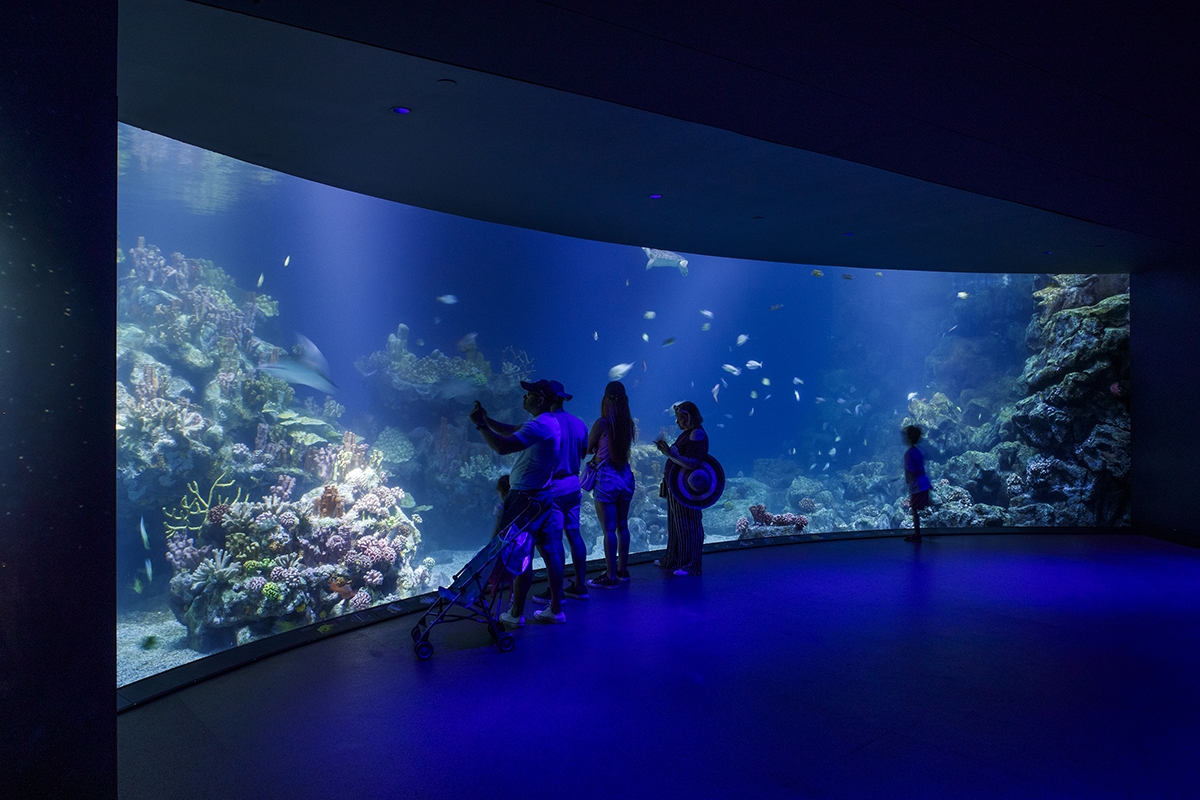Welcome to an interview with Paolo Ferrari, the founder of Studio Paolo Ferrari, a renowned architecture, design, and interior office based in Toronto. We are thrilled to delve into Studio Paolo Ferrari’s latest triumph—Daphne, which has recently been honoured with the Interior Design of the Year award at the SIT Furniture Design Awards.
Daphne, Toronto’s newly-opened gem, is a contemporary and eclectic reimagining of the quintessential American bistro. Sprawling across a series of distinctive rooms, it embodies both the unexpected and the familiar, merging the warmth and nostalgia of New England prep with an imaginative and grand design. The space is at once intimate and expansive, eccentric and sculptural, reminiscent of a great residence that has evolved over time. Designed to create an experience of wonder and subtle awe, Daphne is a world unto itself, awaiting discovery.
Every piece of furniture and lighting within Daphne is custom-designed, establishing it as a space truly without parallel. Ferrari’s design philosophy often draws deep inspiration from art, architecture, and cinema, and Daphne is no exception. At the heart of the project lies a cinematic duality—an immersive, Kubrick-inspired experimentation contrasted with the softness and conviviality of a Nancy Meyers aesthetic. This unexpected playfulness, coupled with timeless sophistication, redefines the American bistro experience, inspiring guests to savour both the joy of discovery and the effortless comfort of home.
Join us as we explore the creative journey behind Daphne with Paolo Ferrari, diving into the inspirations, challenges, and triumphs that have culminated in this extraordinary space.
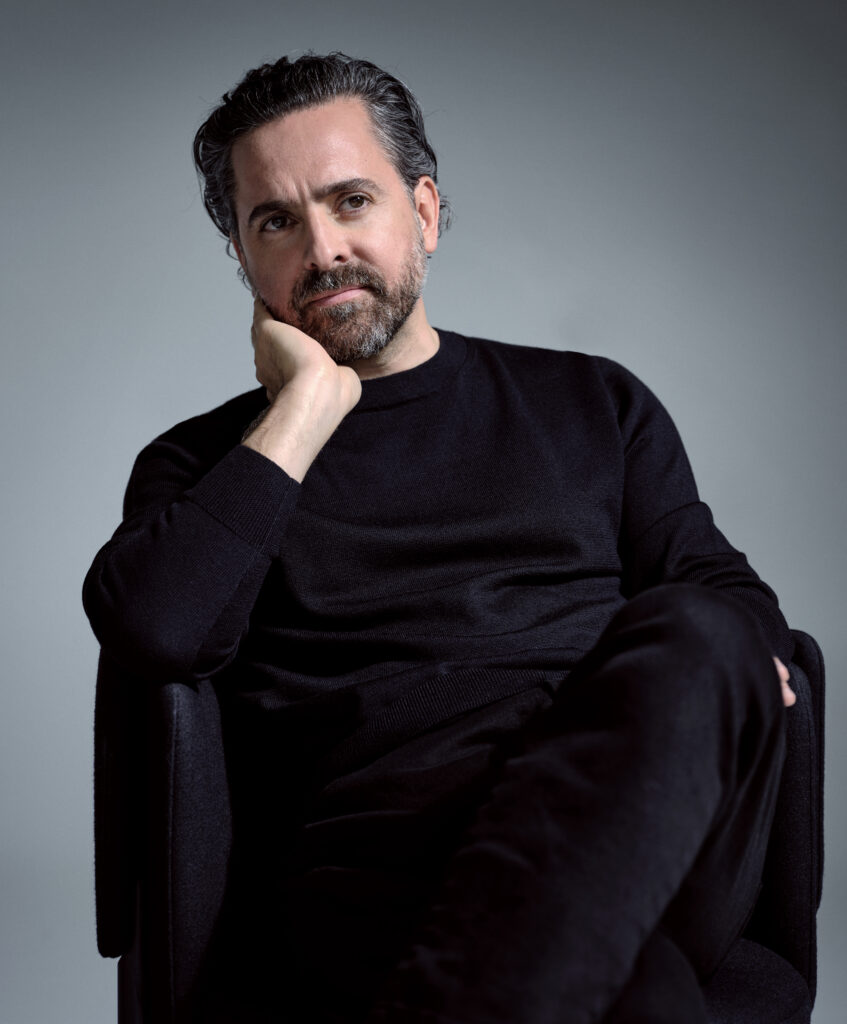
Can you tell us a bit about yourself, your professional background and what led you to a career in design?
When it was time to channel my creativity into a career I decided to enrol into OCAD to study environmental design. The key factor there was the intermingling of art and architecture with interior design. I liked the ambiguity of the courses, the range of ideas, and the way we learned to develop designs, always starting with a concept. From there, I went into different professional studios until I felt the urge to start my own practice. The rest is history.
Can you elaborate on the concept and vision behind Daphne’s eclectic and sophisticated design?
In general, our work bridges timelessness and the avant-garde, often expressing cinematic quality. We look for our interiors to have the feel of a journey, evoking the essence of materials and embracing unexpected form and details to create a balanced, human-centric world. The materials I select are presented with subtlety to preserve their natural resonance and potency—their inherent human and emotional qualities.
For Daphne we wanted to tap into the spirit of the American Bistro, yet to create something entirely reimagined. We moved away from the typical wood paneling and a heavy, dark atmosphere, and instead intentionally designed the space to evoke softness and levity. This ethos underlines Daphne, as a space that seemingly effortlessly fuses both a subtle monumentality and a convivial warmth. Daphne simultaneously embodies the unexpected while bringing in the warmth and nostalgia of New England prep.
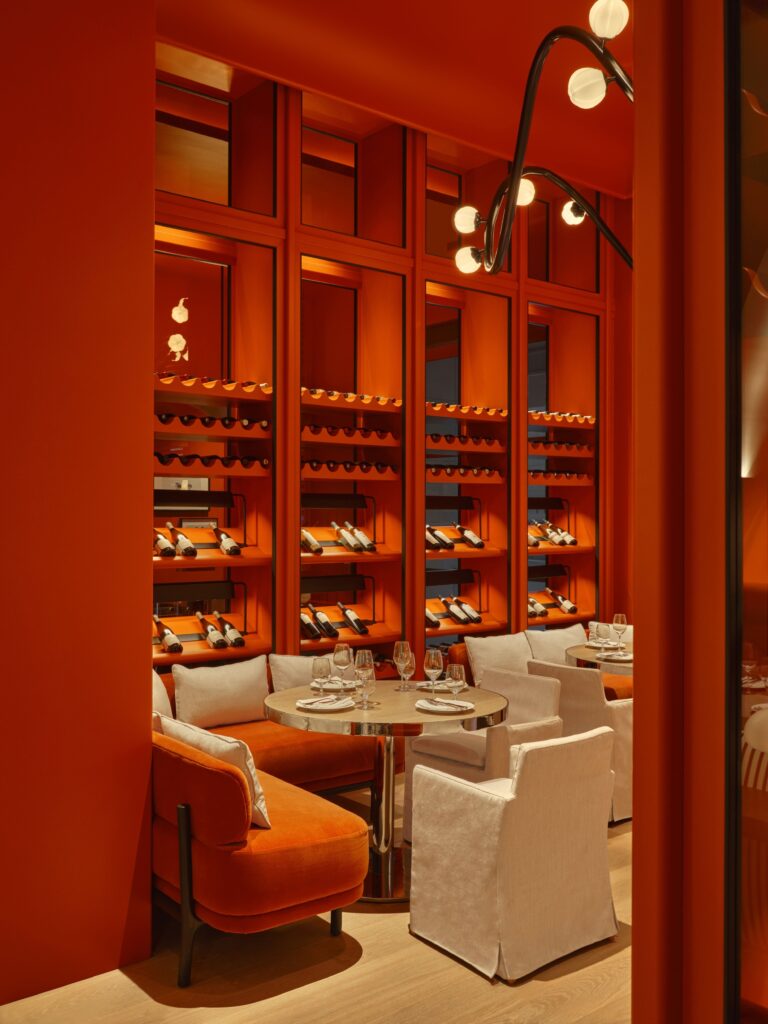

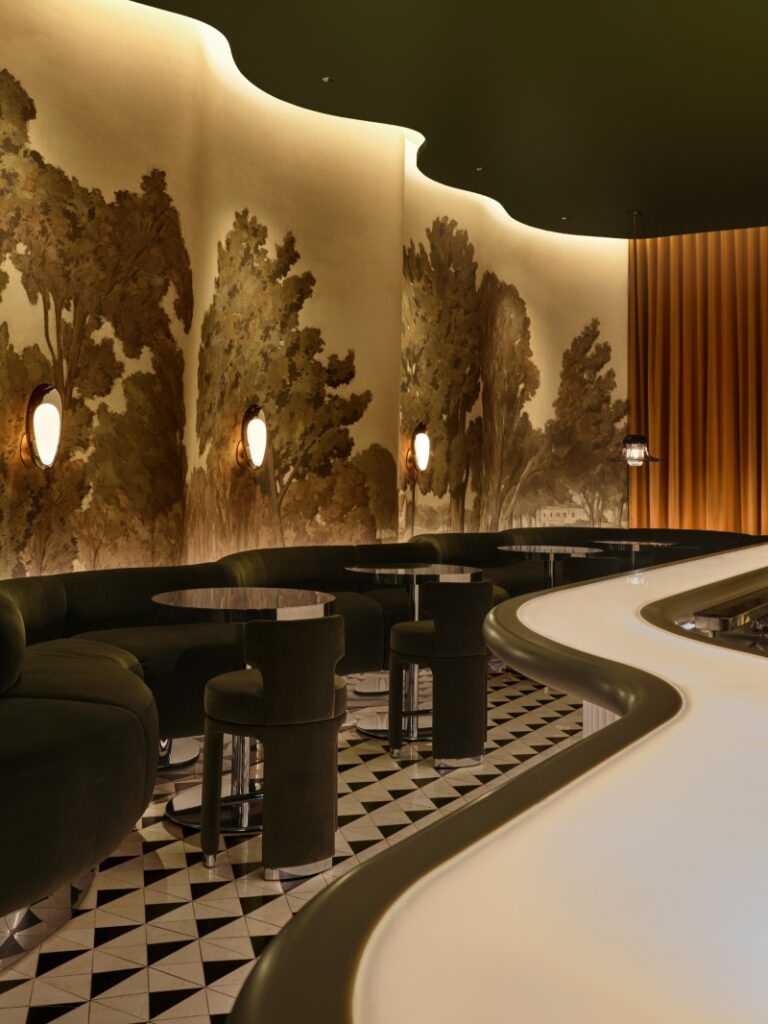
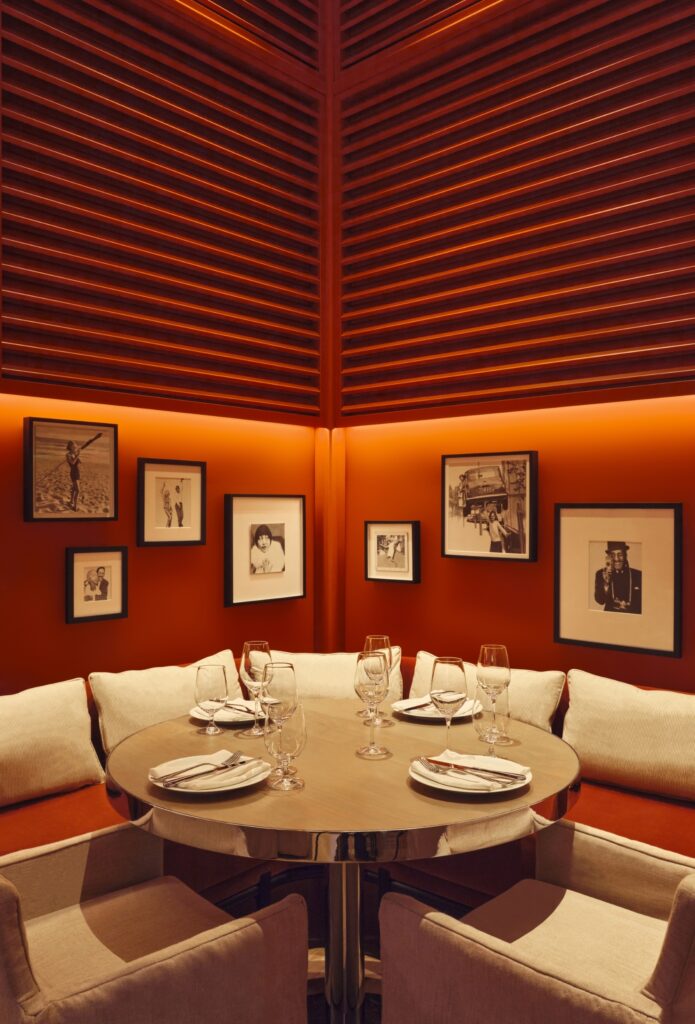
Can you walk us through the design process? How did the design evolve from your initial idea to the final product?
Interior design is about finding ways to celebrate human existence and rituals, regardless of the typology. Each project is approached as a unique entity, allowing us to re-explore and reinvent design concepts without anchoring to fleeting trends or the post-millennial maelstrom of ephemeral imagery. However, a project like Daphne offers the ideal complexity and demand to actualize these concepts. The tension between minimalism and expressiveness serves as the core that guides our design process, naturally leading to the avant-garde in everything we do. I believe Daphne is a perfect example of our work, classic and yet a bit futuristic.
How do the cultural references, such as Kubrick-inspired elements and Nancy Meyers’ aesthetics, influence the design?
It’s about seeming subtle cues. The Kubrick & Meyers reference ties back to an exploration of both experimentation and timelessness.
All furniture and lights were custom-designed specifically for this project, can you tell us more about this process?
Daphne is a world unto itself, awaiting discovery. The entirety of the furniture and lighting is custom-designed. We work with craftsmen from all over the world to realize our ideas, and sometimes we even commission our own wallpaper because we can’t find what we need. There is no standard process, each project is unique and rooted in our creative process.

Can you tell us about the main challenges you faced while designing Daphne? What did you learn from the process?
Building work is always challenging, whether is the demand of a project budget, timing, or site conditions. Daphne was similar in this respect, but we thrive on problem solving and it makes for a much more rewarding final product. If the process was too easy, it could get boring.
Is there a personal story or element that you included in the design of Daphne?
All of our work is deeply connected.
Congratulations on winning the SIT Interior Design of the Year award! What is next for you and your studio? Are there any new designs you’re working on that you can tell us about?
We are very fortunate to have incredible work in progress all over the world that keeps us busy and motivated. We are currently working on new hospitality work from Hong Kong to Puerto Rico, but many of those projects are still confidential so we can’t reveal much. Recently, we opened a studio in Milan, and already working with San Lorenzo, and planning a few more projects in Europe. All very exciting! And we are super honoured to win the SIT Interior Design of the Year Awards, Thank you so very much!
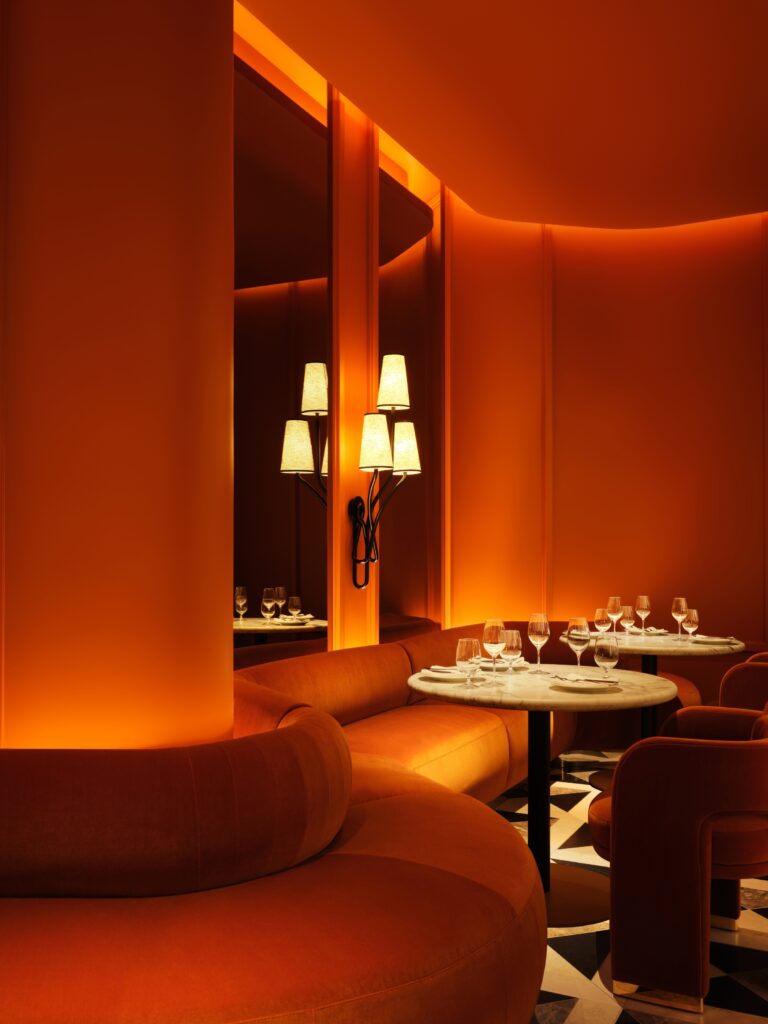
What advice would you offer to up-and-coming interior designers?
Don’t look to other designers for ideas. A collage of other people’s work is not designed. Be original, and get inspired by other fields, and by life itself.



